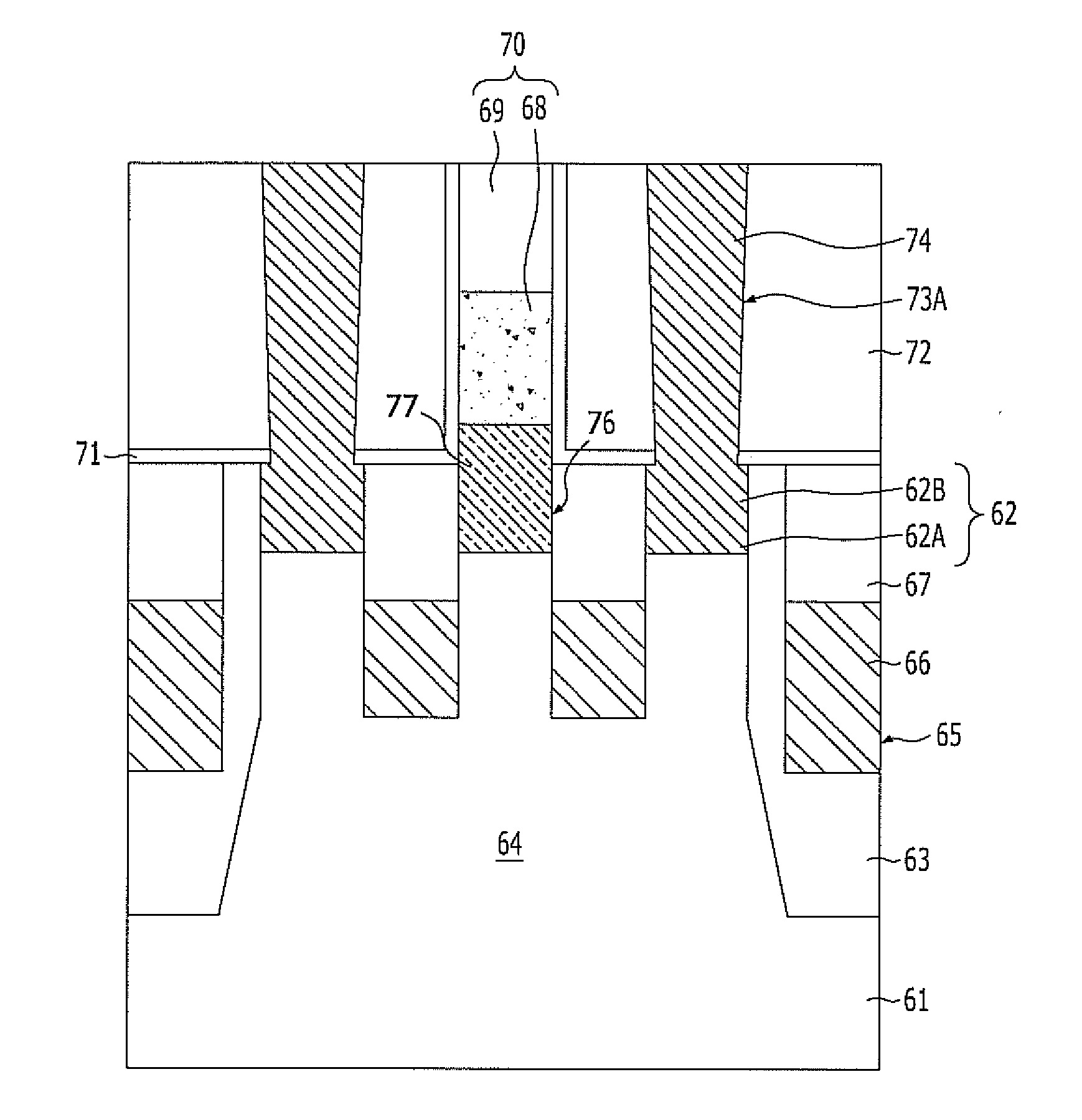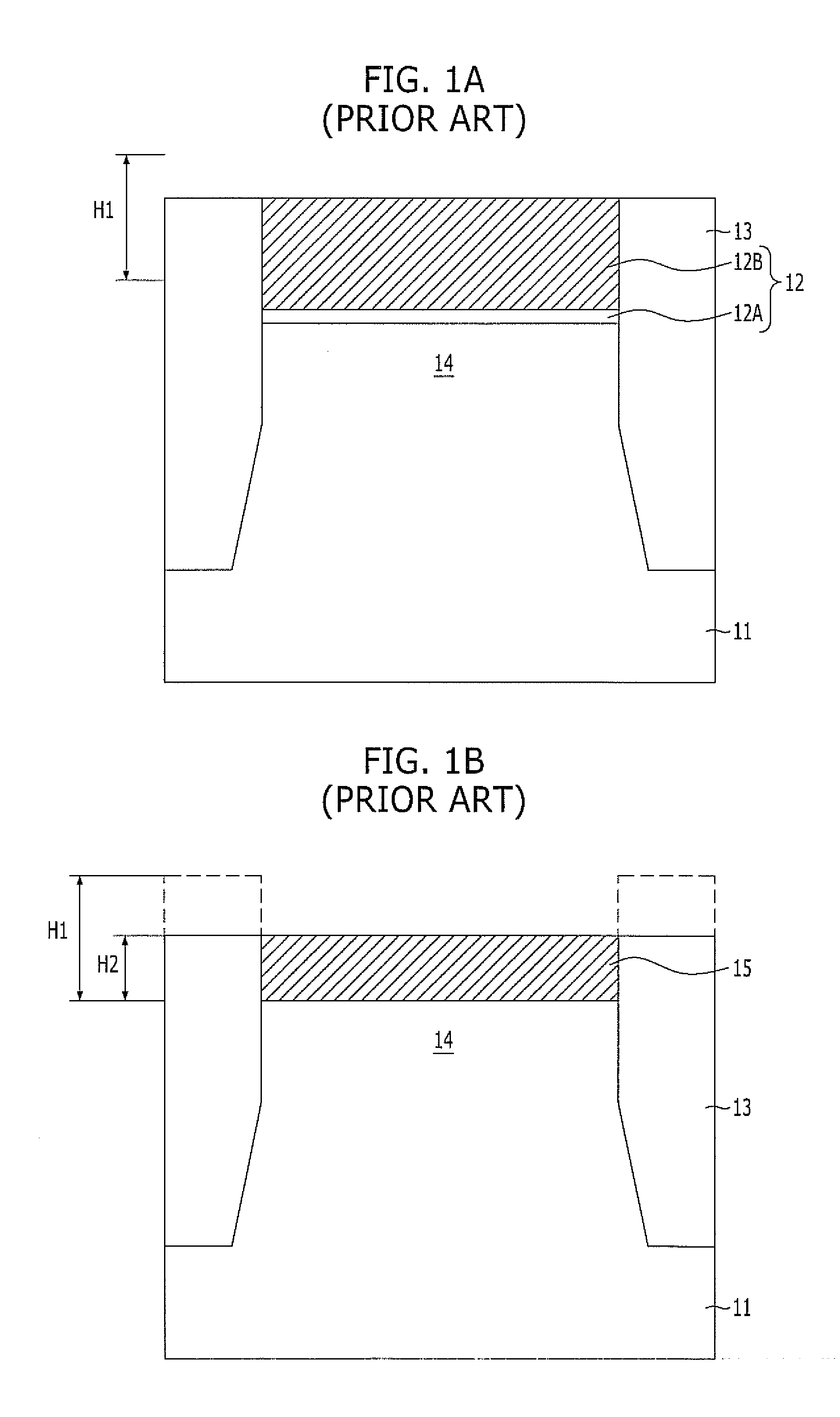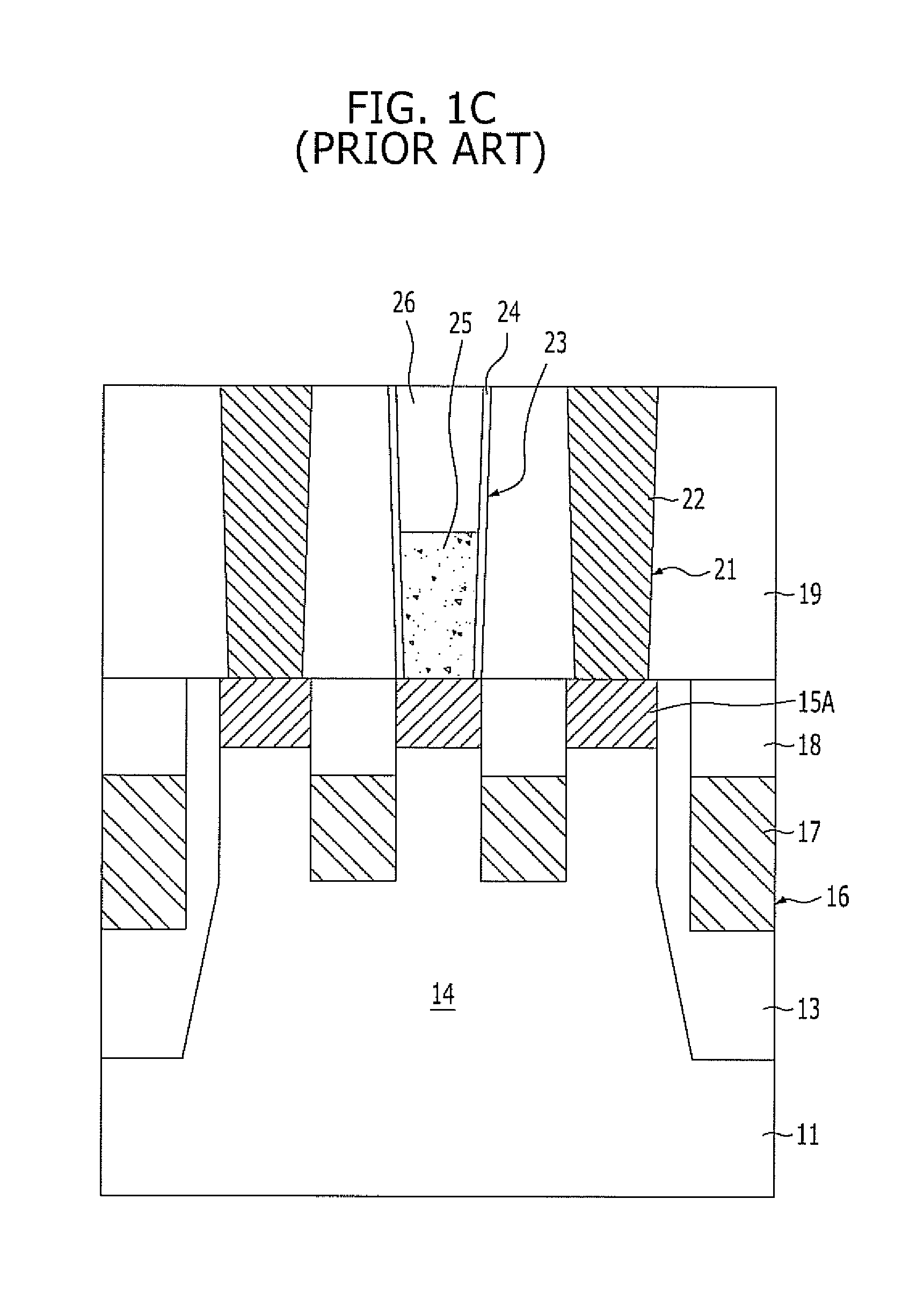Method for fabricating semiconductor device with buried gate
a technology of semiconductor devices and gate structures, applied in semiconductor devices, semiconductor/solid-state device details, electrical devices, etc., can solve the problems of achieving gate structure limitations, unable to obtain desired device properties, and affecting the fabrication process. , to achieve the effect of increasing contact resistan
- Summary
- Abstract
- Description
- Claims
- Application Information
AI Technical Summary
Benefits of technology
Problems solved by technology
Method used
Image
Examples
first embodiment
[0025]FIGS. 2A to 2I are cross-sectional views illustrating a method for fabricating a semiconductor device with buried gates in accordance with the present invention.
[0026]Referring to FIG. 2A, a hard mask pattern 32 including a pad oxide layer 32A and a hard mask polysilicon layer 32B stacked therein is formed over a substrate 31. The hard mask polysilicon layer 32B substantially functions as an etch barrier, and the pad oxide layer 32A enhances the adhesion between the hard mask polysilicon layer 32B and the substrate 31, e.g., a silicon substrate. Here, when a polysilicon thin film is directly formed over a silicon substrate, peeling of the polysilicon thin film may occur due to poor adhesion between the polysilicon thin film and the silicon substrate.
[0027]The hard mask pattern 32 may be formed to have such a thickness H1 that it may protect active regions 34 from leaning during a subsequent process of forming isolation trenches. Also, the hard mask pattern 32 may be formed to ...
second embodiment
[0052]FIGS. 3A to 3G are cross-sectional views illustrating a method for fabricating a semiconductor device with buried gates in accordance with the present invention.
[0053]As illustrated in FIG. 3A, a first hard mask pattern 62 including a pad oxide layer 62A and a hard mask polysilicon layer 62B stacked therein is formed over a substrate 61. The hard mask polysilicon layer 62B substantially functions as an etch barrier, and the pad oxide layer 62A enhances the adhesion between the hard mask polysilicon layer 62B and the substrate 61, e.g., a silicon substrate. Here, when a polysilicon thin film is directly deposited on the silicon substrate, peeling of the polysilicon thin film may occur due to poor adhesion between the polysilicon thin film and the silicon substrate.
[0054]The first hard mask pattern 62 may be formed to have a thickness H1 to prevent active regions 64 from leaning during a subsequent process of forming isolation trenches. Moreover, the first hard mask pattern 62 m...
PUM
 Login to View More
Login to View More Abstract
Description
Claims
Application Information
 Login to View More
Login to View More - R&D
- Intellectual Property
- Life Sciences
- Materials
- Tech Scout
- Unparalleled Data Quality
- Higher Quality Content
- 60% Fewer Hallucinations
Browse by: Latest US Patents, China's latest patents, Technical Efficacy Thesaurus, Application Domain, Technology Topic, Popular Technical Reports.
© 2025 PatSnap. All rights reserved.Legal|Privacy policy|Modern Slavery Act Transparency Statement|Sitemap|About US| Contact US: help@patsnap.com



